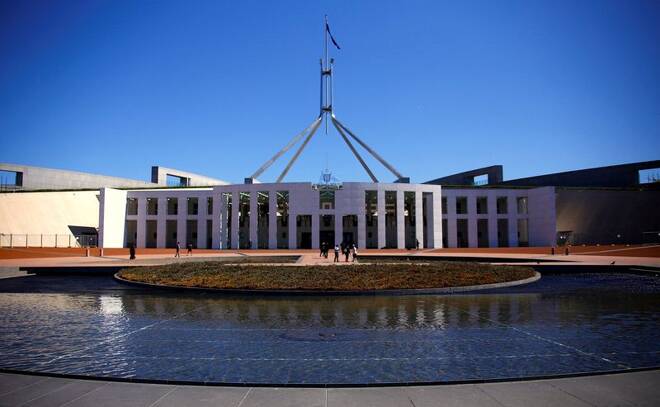Advertisement
Advertisement
Factbox-Australian democracy at a glance
By:
SYDNEY (Reuters) - Australians will vote in a general election on Saturday. The two main groups are the ruling conservative Liberal-National coalition and the opposition Labor Party, and there is a competitive cohort of independent and minor party candidates.
SYDNEY (Reuters) – Australians will vote in a general election on Saturday. The two main groups are the ruling conservative Liberal-National coalition and the opposition Labor Party, and there is a competitive cohort of independent and minor party candidates.
Here are some facts on how elections work in Australia:
* Australia does not have a set date for national elections, but the maximum term for the House of Representatives is three years. The election is called by the prime minister. The previous election was on May 18, 2019.
* There are two houses of parliament, with the government formed by the party or coalition holding a majority in the lower chamber, the House of Representatives. The prime minister, currently Scott Morrison, is chosen by the governing party from the House.
* All 151 seats in the House will be up for election. Morrison’s Liberal-National coalition holds 76 seats, the opposition Labor Party led by Anthony Albanese holds 68 and seven are held by minor parties and independents.
* Since the last election, a review of electoral boundaries and population changes added one seat for the state of Victoria while Western Australia lost one.
* The upper house, the Senate, has 76 members – 12 from each of the six states and two from each of Australia’s two less-populous territories. Forty Senate seats – six from each state and the four territory seats – will be contested at this election.
* A graphic on the last parliament
* State senators are elected for six-year terms, while territory senators are elected for three years. There are some circumstances when the House of Representatives and Senate cannot agree on legislation and the entire upper house can be dissolved for election.
* Voting is compulsory for about 16 million Australians, who must register when they turn 18. Those who do not vote face a fine of A$20 ($14)
* Australia has a preferential voting system for elections to the lower house. Voters rank candidates in order of preference on their ballot papers.
* A lower-house candidate who gets more than 50% of the first-preference votes wins the seat. If no candidate reaches that threshold, the one with the fewest votes is excluded and their votes are distributed to the person each of those voters nominated as their second preference. This continues until one candidate passes the 50% threshold.
* Since 2010 there has been a high turnover of prime ministers, following changes that allow the governing party to call a leadership vote without involving the electorate. In that period, Kevin Rudd (Labor), Julia Gillard (Labor), Rudd (for a second time), Tony Abbott (Liberal), Malcolm Turnbull (Liberal) and Morrison (Liberal) have served as prime minister.
* Following changes to Liberal Party rules on internal leadership votes, Scott Morrison has become the first Prime Minister to serve a full three-year term since a John Howard-led coalition was voted out in 2007 after 11 years in power.
($1 = 1.4192 Australian dollars)
(Reporting by John Mair and Byron Kaye; Editing by Lincoln Feast)
About the Author
Reuterscontributor
Reuters, the news and media division of Thomson Reuters, is the world’s largest international multimedia news provider reaching more than one billion people every day. Reuters provides trusted business, financial, national, and international news to professionals via Thomson Reuters desktops, the world's media organizations, and directly to consumers at Reuters.com and via Reuters TV. Learn more about Thomson Reuters products:
Did you find this article useful?
Latest news and analysis
Advertisement
